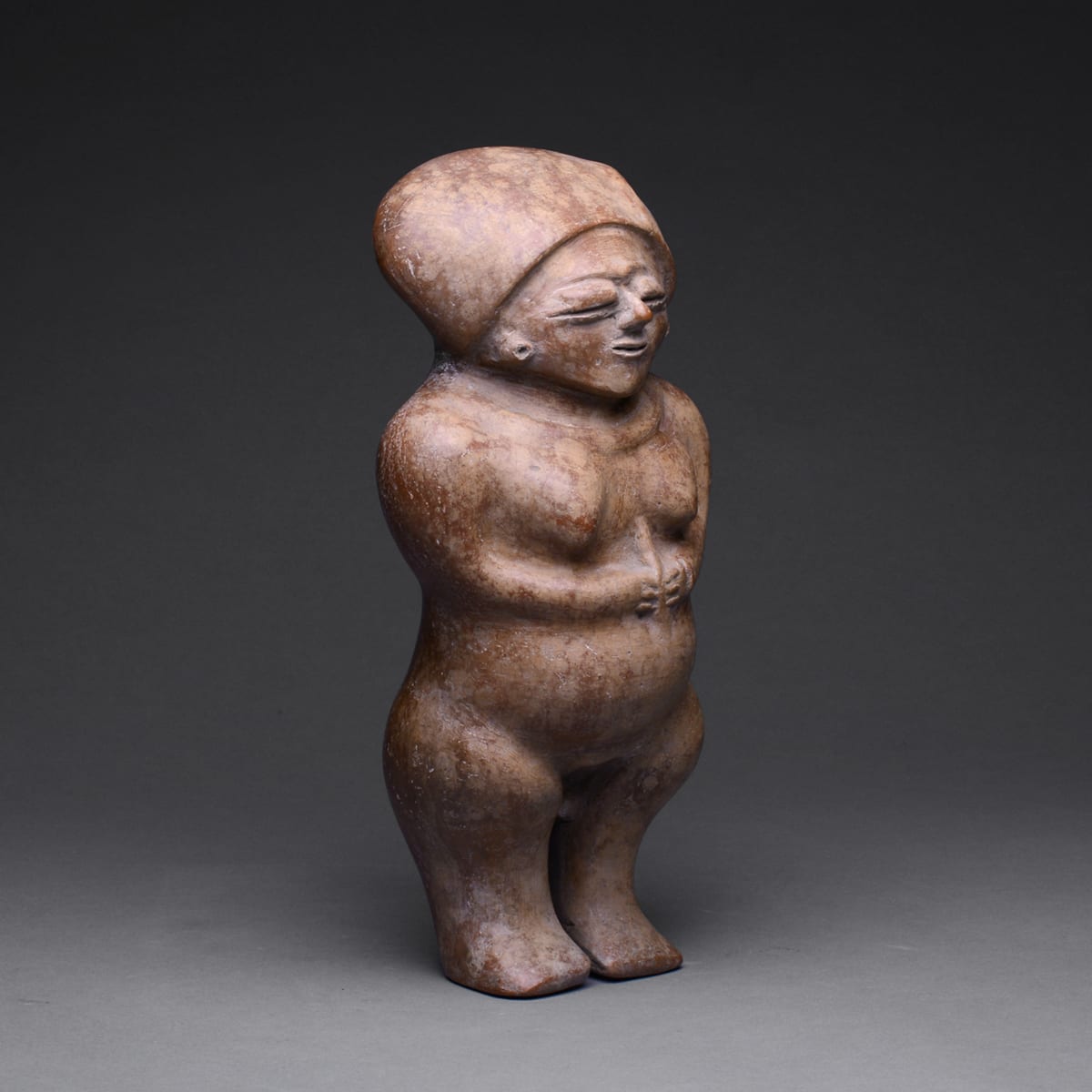Chorrera Terracotta Sculpture of a Woman, 1100 BCE - 300 CE
Terracotta
height 30.5 cm
height 12 in
height 12 in
PF.2604
Further images
The Pre-Columbian cultures of Ecuador are among the oldest in South America and among the first to master the art of pottery. Although we know little about the peoples themselves...
The Pre-Columbian cultures of Ecuador are among the oldest in South America and among the first to master the art of pottery. Although we know little about the peoples themselves or their traditions, historians have been able to piece together a picture of life in Ancient Ecuador thanks in part to the art and artifacts left behind. The culture of Valdivia created some of the oldest known works of art in the Americas. Situated along the coastal strip of Ecuador, the Valdivians established a thriving society that flourished for around two thousand years (from approximately 4000 to 1500 B.C.). Today they are famed for their small fertility figures, believed to be the earliest representational works of art in the Americas, first carved from stone, later formed from terracotta.
Hundreds of years later after the Valdivians disappear from the archaeological record appears another culture to which the name Chorrera has been attached (lasting from circa 1100-300 B.C.). Little is known about this culture; however, it is significant for its widespread geographical reach. As such, their artistic style greatly influenced those diverse cultures that began to emerge in the final centuries of the Chorrera period, a time historians have labeled the Period of Regional Development.
This female figure from the Chorrera period (Contemporary with the Chavin of Peru and the Tlatilco in Mexico) reveals the Ecuadorian craftsmen refined skill at manipulating the medium and his creative ability to express heightened emotion and sensitivity. Here we experience a standing female figure, whose expressive face evokes a feeling of deep spirituality as she gazes downward through half-closed eyes. At the same time her small hands clasp an object in front of her, at once focusing our attention on her stomach, its largeness emphasizing the tiny life that grows within her. We are deeply touched by the abundant beauty of this ancient female figure and all that she represents, for she appears to us as the mother Goddess...ancient symbol of harmony and the continuing cycle of life, of our oneness with nature and nature's eternal rhythms. How fortunate we are that this extraordinary work of Ancient Ecuadorian art has endured through the ages, entering our lives with a spirited power that is as deeply felt today as it was 3,000 years ago.
Hundreds of years later after the Valdivians disappear from the archaeological record appears another culture to which the name Chorrera has been attached (lasting from circa 1100-300 B.C.). Little is known about this culture; however, it is significant for its widespread geographical reach. As such, their artistic style greatly influenced those diverse cultures that began to emerge in the final centuries of the Chorrera period, a time historians have labeled the Period of Regional Development.
This female figure from the Chorrera period (Contemporary with the Chavin of Peru and the Tlatilco in Mexico) reveals the Ecuadorian craftsmen refined skill at manipulating the medium and his creative ability to express heightened emotion and sensitivity. Here we experience a standing female figure, whose expressive face evokes a feeling of deep spirituality as she gazes downward through half-closed eyes. At the same time her small hands clasp an object in front of her, at once focusing our attention on her stomach, its largeness emphasizing the tiny life that grows within her. We are deeply touched by the abundant beauty of this ancient female figure and all that she represents, for she appears to us as the mother Goddess...ancient symbol of harmony and the continuing cycle of life, of our oneness with nature and nature's eternal rhythms. How fortunate we are that this extraordinary work of Ancient Ecuadorian art has endured through the ages, entering our lives with a spirited power that is as deeply felt today as it was 3,000 years ago.







